|
|
 |
|
November 29, 2019
Writing this on the day after Thanksgiving, I'm deeply thankful for all of the wonderful wines I was fortunate to taste during 2019. There were so many of them out of the 9,000+ I tasted that selecting "the best of the best" is more an act of impulse and emotion than direct comparison, as the top wines were tasted at different times in varied settings on four different continents. 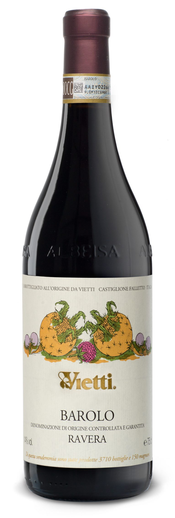 Nevertheless, the wine that still holds the strongest grip on me was one I tasted all the way back in January in the gorgeous town of Alba, just below the Alps in northwestern Italy. Nevertheless, the wine that still holds the strongest grip on me was one I tasted all the way back in January in the gorgeous town of Alba, just below the Alps in northwestern Italy.
I hasten to emphasize that the beauty of the place had nothing to do with the evaluation experience, as I tasted this "blind" among many, many other newly-released, Nebbiolo-based wines over the course of four days. Working on 100+ of these per day is a little less fun and a lot more like "work" than you might guess...until a truly great wine in the long sequence just kicks down the door and announces itself with exhilarating clarity, which is how Vietti's 2015 Ravera presented itself to me.
If you've read some of my Barolo reviews from the past 10 years of blind tastings in Alba, you'll know that I’m not overawed by the region’s big names, nor afraid at all to give very high scores to up-and-coming producers regardless of how obscure they may yet be. But with that noted, it is also true that sometimes famous houses prove entirely deserving of their fame, as in the case of Vietti's phenomenally great Barolo from the Cru of Ravera in the commune of Novello.
In terms of texture, it is simply the best 2015 Barolo I’ve tasted, with an uncanny combination of silkiness and proportionality that effectively disguises the fact that it is actually a big, concentrated, powerful wine. Wine descriptors are all just analogies, so bear with me while I note that it is essentially impossible for a human being to come off as “charming” and “formidable” simultaneously, whereas this wine proves that the combination is no impossibility in the rare realm of truly great Barolo.
Ultra-complex and yet amazingly pure and natural-seeming, this will be expensive, but well worth taking a hammer to your piggy bank. $195 is a lot to ask from a piggy bank, but not too much to ask for this amazing wine, which I may have under-scored at 99 Points. Do what you must: Raid the kids' College Fund, sell your watch, hock your wedding ring...do whatever is necessary to get ahold of one of these. Then wait about 8 - 10 years, and get ready to hear the Heavenly Choir chime in when this hits your palate....
Posted by Michael Franz at 11:46 AM
|
|
November 27, 2019
The one thing I know about you for sure is that you read wine websites, and that gives me very good odds of being correct about one other thing: You are probably the most wine-knowledgeable person attending your meal for Thanksgiving, and in turn, that probably means you’re responsible for bringing the wine.
If you plan to take that responsibility seriously, you’d do well to press past the many particular recommendations being offered at the moment to consider why certain wines work much better with this meal than others. Although that may sound like more work than you need right during this busy season, you’ll actually be freed up by learning some pairing principles, as they’ll enable you to select from a very wide range of wines with strong assurance of success.
1) Turkey’s flavor is relatively subtle, so wines with a lot of intensity and power can overwhelm it. Different preparations count, though, such as smoking the bird, but this is still not a meal suited to overly pushy wines.
2) Most households will have wine novices at the table, so intense wines are doubly inadvisable, as are tannic ones. Tannic wines also don’t work well because there’s not a lot of dietary fat in most turkey preparations, even though some people put lots of butter into side dishes like mashed potatoes.
3) Although really big wines don’t make sense with this meal, don’t go too small. Dark meat with gravy is much more robust than white meat without gravy, so quite light wines like Sauvignon Blanc or Pinot Grigio could be overwhelmed. This is a very important factor because some diners much prefer dark or light meat, and these preferences don’t always coincide with preferences for red or white wine.
4) Many households with large gatherings will include guests who much prefer either whites or reds, so including one of each is wise, even if as few as 4 are around the table.
5) Medium body and moderate robustness is the right road to success, and avoiding any characteristics that are sharply prominent (e.g., acidity, wood, sweetness, tannin) is important because of the complexity of the meal.
6) This complexity stems mostly from the side dishes, which matter…a lot. Cranberries are usually tart or sweet or both. Sweet potatoes are … um… sweet. Mashed potatoes are rich. Stuffing is too, almost regardless of the components. Green vegetables can range from pungent to bright. The only wines that can succeed with everything on a typical plate are thus integrated as well as medium bodied and moderately intense.
7) Integration can result from the character of the grape variety (e.g., Pinot Blanc) or from cellar techniques used or eschewed (malolactic fermentation to smooth out acidity, or wood ageing avoided to retain roundness and primary fruit). It can also result from ageing in reds, which softens tannin and leads to absorption of wood notes. However, the wine needs to have started its development with relatively acidity if it is to achieve integration from ageing without losing refreshment value. So, a cool climate Syrah from the northern Rhône can work well, but an aged Shiraz from Australia isn’t a great choice.
8) Although this isn’t a particularly fatty meal, it invariably ends up leaving everyone very full…if not downright comatose from tryptophan. So, successful wines always have some refreshment value, regardless of whether white or red. This is almost always stems from acidity, which in turn is almost always geographically associated with relatively cool climates. So, pick wines from a cool region, or ask a wine consultant in a retail shop to help you do that.
9) To help your guests perk up their appetites (and retain consciousness over the course of the meal), welcome them with very light wine. Sparkling wines make excellent aperitifs on any occasion, and are particularly appropriate for a celebration, but pick light ones. Rosé sparklers can be very good with the meal, but lighter Blanc de Blancs bottles are much better for starters. Regarding other before-dinner drinks, beer is filling and cocktails are befogging (and also enhance the likelihood of family fights). Nevertheless, hospitality requires that we accede to requests…even when based on bad ideas.
10) “Light is Right” holds equally true at the end of the meal. Finishing the dinner with something fresh and relatively light (like Riesling Auslese from Germany) is a better idea than Port, but if the dessert demands, Tawny is a much better choice than LBV or Vintage. However, if you have guests who want a Port or a Cognac after the meal, just be sure to have a sufficient number of guest rooms, couches or air mattresses to accommodate those who keel over.
Happy Thanksgiving from all of us at Wine Review Online!
Posted by Michael Franz at 12:09 PM
|
|
November 20, 2019
BEAUNE, Burgundy, November 19, 2019: First the good news. The 2018 vintage produced large quantities of high-quality wines, both red and white. It’s unusual to see good yields of high-quality wines in Burgundy, but that’s what happened in 2018. Unlike the 2015 vintage, which I characterized as a “point and shot” vintage for the reds because the quality was so consistently 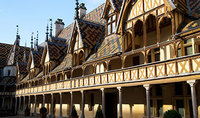 high that you practically couldn’t miss picking a fine wine, there is considerable variability among the 2018s that I’ve tasted. No surprise there because, after all, this is Burgundy. Look for more detailed reporting in future after the wines are bottled. high that you practically couldn’t miss picking a fine wine, there is considerable variability among the 2018s that I’ve tasted. No surprise there because, after all, this is Burgundy. Look for more detailed reporting in future after the wines are bottled.
The just completed 2019 vintage looks to be of high quality as well, though yields were down by 50%. Indeed, at the just completed 159th Hospices de Beaune auction, known locally as Le Vente des Vins, prices were up by about 20% overall. Enthusiasm for the vintage was high at this early stage among critics. In the 50 wines shown in the pre-auction tasting, I found an incredible consistency and raciness that balanced their richness.
The bad news is the mixed economic picture. Both Gilles de Larouzière (the head of the organization that represents the major négociants in Burgundy) and Louis Fabrice Latour (the President of the BIVB, the professional organization that represents all of Burgundy) explained that the current economic picture was mixed. On the positive side, both the volume and value of exports of Burgundy so far in 2019 reached record numbers. On the other hand, there is considerable economic uncertainty for producers stemming from multiple sources: Unrest in Hong Kong that perturbs that important market; continuing confusion about Brexit and possible peril for the British market, and protests by the the Gilets Jaunes ("Yellow Vests") throughout France that have hurt 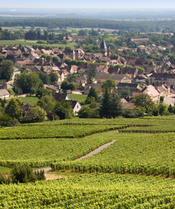 the supermarket business (where much of regional Burgundy is sold) while also discouraging sales to restaurants and bars as customers avoid areas hit by violence. the supermarket business (where much of regional Burgundy is sold) while also discouraging sales to restaurants and bars as customers avoid areas hit by violence.
For us Americans, the 25% tariff on French wine under 14% alcohol by volume will likely chill the otherwise hot Burgundy market. Though the tariff is 25%, the final increase to the consumer will likely be more as those in the distribution chain take their mark ups on prices that now include the 25% tariff. Gilles de Larouzière, CEO of Bouchard Pere et Fils, says they cannot afford to reduce their prices to offset the tariffs, because their margins are already very thin. Louis Fabrice Latour, who also heads that eponymous producer, thinks shipping in bulk to avoid tariffs is a terrible idea because the wine could be adversely affected in transport or even adulterated before bottling, and risks losing the Burgundian identity. That said, the prospect of tariffs did not impede U.S. buyers at the auction. Jeanne-Marie de Champs, one the very best brokers in the regions, noted that she had a similar number of American clients for whom she was bidding this year as last.
Posted by Michael Apstein at 8:57 AM
|
|
November 6, 2019
There are a number of good reasons to visit Sedona, Arizona. The stunning and picturesque "red rock" country alone is a magnet for tourists. Proximity to Flagstaff and the Grand Canyon also rank high on the list. Then there is the perceived spiritual and healing aspect of a Sedona vortex; the Native American culture and history; and the hundreds of hiking trails.
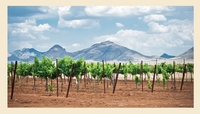 There is another attraction that doesn't get as much attention, though awareness seems to be growing. The Verde Valley Wine Trail, which includes Sedona and the neighboring villages of Cottonwood, Clarkdale and Oak Creek, provides a glimpse into the potential of Arizona wine. There is another attraction that doesn't get as much attention, though awareness seems to be growing. The Verde Valley Wine Trail, which includes Sedona and the neighboring villages of Cottonwood, Clarkdale and Oak Creek, provides a glimpse into the potential of Arizona wine.
The Arizona wine industry may be minuscule by California, Oregon and Washington standards, but it is very real and, from all appearances, very promising. When most of us think of Arizona, the Phoenix area and intense heat come to mind, not verdant wine country.
The Verde Valley and the Cochise Valley (considered Arizona's premier grape-growing region) to the south, near Tucson, are at elevation, high above the desert floor. Sedona sits at 4,500 feet above sea level, for example. The conditions and the soils, primarily limestone and sandstone, are compatible with viticulture. T his would be news to many wine enthusiasts because awareness of Arizona wine and its potential is but a recent development.
I stumbled across the Verde Valley Wine Trail by accident while taking a shortcut off Interstate 17 into Sedona. My curiosity was aroused while driving north through the rugged Page Springs area and passing four wineries and/or winery tasting rooms.
Upon reaching my vacation destination, I was pleased to find Arizona wines on a number of restaurant wine lists and pleasantly surprised to discover the wines were rock-solid. Sufficiently intrigued, I carved out some time to visit Cottonwood, about a 20-minute drive from Sedona. The winery tasting rooms — and there are six — are situated in Old Town Cottonwood and have a rustic western aura about them.
A few have restaurants, and I chose Merkin Vineyards Tasting Room and Osteria for lunch and a flight of white, rose and red wines made from Arizona grapes. Lunch was superb. So were the wines, with the exception of an orange wine that I suppose would work for someone who actually enjoys the oxidative characteristics of orange wine, which I don't.
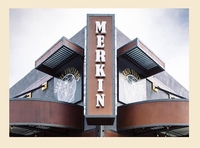 What struck me most, besides the excellent quality, was the creativity of the blends offered. There was a Riesling (75%)-Chardonnay (25%) offering and a Malvasia Bianco (70%)-Albarino (30%) offering that were both quite refreshing and well balanced. The red blends included a Sangiovese (60%) and Negroamaro (40%) blend that you would be hard-pressed to find in Italy, where those two grapes are traditional. What struck me most, besides the excellent quality, was the creativity of the blends offered. There was a Riesling (75%)-Chardonnay (25%) offering and a Malvasia Bianco (70%)-Albarino (30%) offering that were both quite refreshing and well balanced. The red blends included a Sangiovese (60%) and Negroamaro (40%) blend that you would be hard-pressed to find in Italy, where those two grapes are traditional.
Also presented was a very traditional blend of Grenache (40%), Syrah (40%) and Mourvedre (20%) that hit the mark, as well as a Super Tuscan-style
Sangiovese (95%) and Cabernet Sauvignon (5%) blend. A 100% Tempranillo and a 100% Monastrell also had good vibes.
My brief visit wasn't intended to be a deep dive into Arizona wine. It was, however, enough to convince me Arizona wine has enormous potential and merits closer attention.
Connect with Robert Whitley on Twitter at @WineGuru.
Posted by Robert Whitley at 2:32 AM
|
|
 |
|